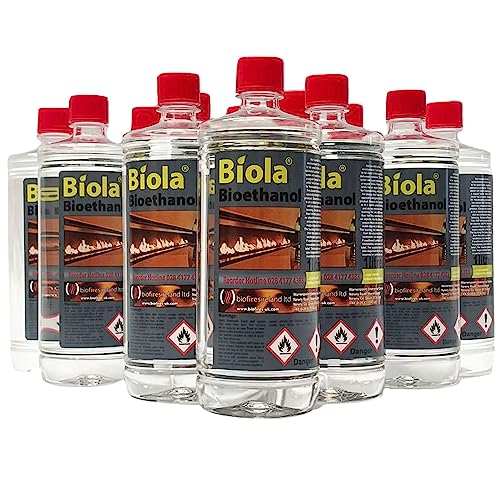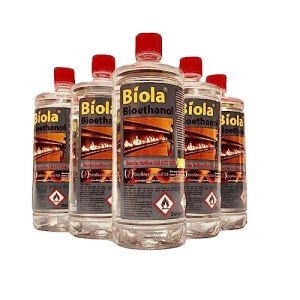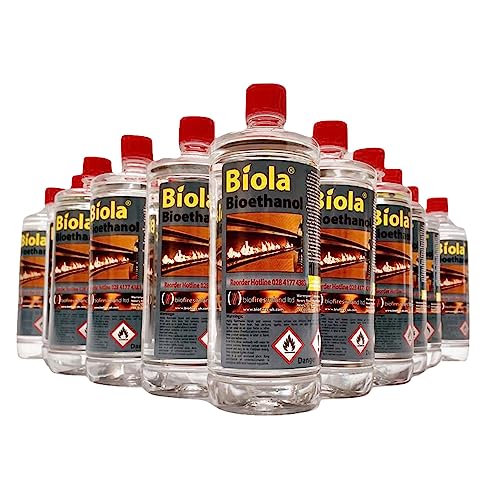As outdoor living spaces become a staple for modern homes, the demand for efficient and clean fuel alternatives for fire pits and stoves has risen significantly. Among the various options available, premium bioethanol fuel is gaining traction among homeowners and enthusiasts alike. This guide delves into the advantages of bioethanol as a fuel source, its environmental impact, and practical considerations for those looking to upgrade their outdoor heating systems.
Understanding Bioethanol Fuel
Bioethanol is a renewable energy source produced from the fermentation of biomass, such as sugarcane, corn, and other agricultural products. Utilizing bioethanol fuel in fire pits and stoves offers numerous benefits, making it an attractive option for homeowners seeking both performance and environmental responsibility.
Production of Bioethanol
The bioethanol production process involves several key steps:
- Fermentation: Biomass is broken down into sugars and fermented using yeast.
- Distillation: The fermented mixture is heated to separate the alcohol from the water and solids.
- Purification: The ethanol is further purified to produce high-quality bioethanol.
Advantages of Premium Bioethanol Fuel
1. Clean Burning
One of the standout features of bioethanol is its clean-burning properties. It produces:
- Minimal Emissions: Bioethanol burns with very little smoke, particulate matter, or harmful pollutants, making it a better alternative to traditional fossil fuels.
- No Residue: Unlike wood or coal, bioethanol leaves no ash or soot, simplifying cleanup and maintenance.
2. Eco-Friendly
Bioethanol is derived from renewable resources, making it a sustainable energy option. The advantages include:
- Carbon Neutral: The carbon dioxide released during combustion is offset by the carbon dioxide absorbed by the plants during their growth cycle.
- Biodegradable: In case of spills, bioethanol is non-toxic and biodegradable, posing minimal environmental risk.
3. Convenience and Versatility
Bioethanol fuels are perfect for various applications, including:
- Indoor and Outdoor Usage: Premium bioethanol can be used in fire pits, stoves, and fireplaces, providing flexibility in design and application.
- No Ventilation Required: Unlike gas or wood-burning appliances, bioethanol stoves do not need chimneys or flues, allowing for more creative installations.
4. Easy to Use
Fire pits and stoves fueled by bioethanol are user-friendly. They typically feature:
- Simple Ignition: Many models are equipped with easy-to-use ignition systems, ensuring quick and safe fire-starting.
- Adjustable Flame: Users can control the intensity of the flame through adjustable burners, allowing for customized ambiance.
5. Aesthetic Appeal
Bioethanol fires create a visually stunning focal point. Key features include:
- Modern Design: Many bioethanol fire pits and stoves feature sleek, contemporary designs that enhance outdoor aesthetics.
- Dancing Flames: The clean-burning bioethanol produces captivating flames, adding warmth and beauty to outdoor spaces.
Safety Considerations
While premium bioethanol fuel is a cleaner alternative, it's essential to observe safety guidelines. Here’s a list of tips for safe usage:
- Read the Manufacturer’s Guidelines: Always follow the specific instructions provided with your bioethanol appliance.
- Keep Away from Flammable Materials: Ensure that flammable items are kept a safe distance from the fire source.
- Store Fuel Properly: Store bioethanol fuel in a cool, well-ventilated area away from direct sunlight.
- Use Designated Containers: Always use the containers specified by the manufacturer for refilling the appliance.
- Extinguishing Flames: Use the proper extinguishing techniques or devices recommended for bioethanol fires.
Installation and Maintenance
Installation
Installing a bioethanol stove or fire pit is generally straightforward. Consider these steps:
- Select an Appropriate Location: Ensure the area is level and away from flammable materials.
- Check Local Regulations: Verify that using a bioethanol appliance complies with local codes and regulations.
- Assemble Following Instructions: Follow the manufacturer's assembly instructions carefully to ensure proper installation.
Maintenance
Maintaining bioethanol appliances is minimal but important for longevity:
- Regular Cleaning: Wipe down the exterior and clear any debris around the burner area.
- Check Burner Condition: Routinely inspect the burner for cracks or wear.
- Fuel Storage: Maintain proper storage of the fuel, regularly discarding any expired or improperly stored product.
Frequently Asked Questions (FAQs)
1. What is premium bioethanol fuel made from?
Premium bioethanol fuel is made from renewable biomass sources, including sugarcane, corn, and other agricultural products.
2. Is bioethanol safe for indoor use?
Yes, bioethanol is safe for indoor use as it produces minimal smoke and emissions; however, proper ventilation and precautions are always advised.
3. Can I use bioethanol fuel in any fireplace or stove?
No, you should only use bioethanol fuel in appliances specifically designed for it to ensure safety and efficiency.
4. Does bioethanol fuel produce smoke or soot?
No, when burned, bioethanol produces a clean flame with little to no smoke or soot.
5. How do I extinguish a bioethanol flame?
The flame can be extinguished with a lid or snuffer designed for bioethanol fires, or users can allow the fuel to burn out.
Premium bioethanol fuel stands out as an environmentally friendly, convenient, and aesthetically pleasing solution for fire pits and stoves. Its clean-burning characteristics, ease of use, and stylish designs make it an increasingly popular choice for homeowners looking to enhance their outdoor living spaces. By considering installation, maintenance, and safety guidelines, users can enjoy warmth and beauty without compromising on environmental values. As the interest in sustainable energy sources grows, premium bioethanol fuel is poised to become a mainstay in outdoor heating solutions.






